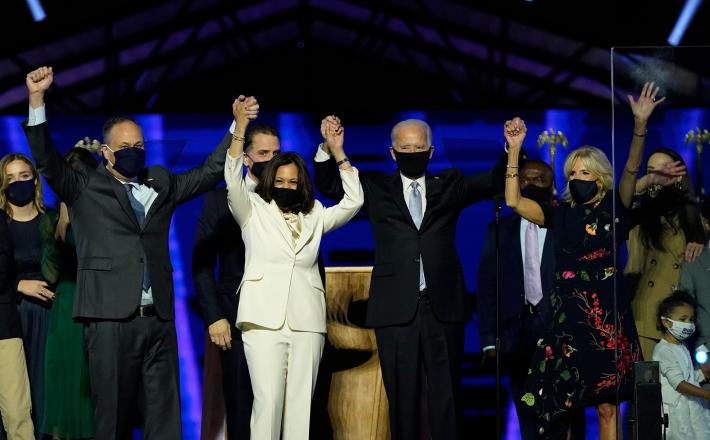The Girlboss Feminism of Joe Biden’s Cabinet
Source: The New Republic
The boys’ club hasn’t gone anywhere, it’s just accepting a few new members.
To date, the Biden-Harris administration has named 17 women to top posts, some of them firsts, many of them contingent on Senate confirmation. Heading in the direction of gender parity in hiring has been regarded as another “audacious” Biden move, a turning point in the country’s history. The opening note of this administration is meant to portend a feminist future, even if it is headed by a white man in his seventies. After a primary that raised hopes that “America would end up with a revolutionary person in the Oval Office,” columnist Monica Hesse wrote in The Washington Post, “[i]nstead, we’ll end up with Joe Biden,” but “he still can be a revolutionary” if his Cabinet consists of at least 50 percent women. It’s not clear if the equality bar is set that low—a perfect half, nothing more—after the highs of the primary, or if it was always so slight.
If your political aspirations are mainly about getting a seat at the table, these appointments may feel worth lauding. But they are in many ways symbolic gains, a point that even some of those who celebrate such symbolism can accept. Their takeaway is that girls will see these women in these jobs and realize “they can do that, too”—not that they will also have the means to do it or that it will necessarily improve many other women’s lives. It’s a regression to the kind of individualistic, girlboss feminism we have been trying to pull away from but that still has a powerful hold on those who posit a commitment to “gender equality” largely confined to who holds the power, not what they do with it.
Click here to read the full article published by The New Republic on 2 December 2020.

The boys’ club hasn’t gone anywhere, it’s just accepting a few new members.
To date, the Biden-Harris administration has named 17 women to top posts, some of them firsts, many of them contingent on Senate confirmation. Heading in the direction of gender parity in hiring has been regarded as another “audacious” Biden move, a turning point in the country’s history. The opening note of this administration is meant to portend a feminist future, even if it is headed by a white man in his seventies. After a primary that raised hopes that “America would end up with a revolutionary person in the Oval Office,” columnist Monica Hesse wrote in The Washington Post, “[i]nstead, we’ll end up with Joe Biden,” but “he still can be a revolutionary” if his Cabinet consists of at least 50 percent women. It’s not clear if the equality bar is set that low—a perfect half, nothing more—after the highs of the primary, or if it was always so slight.
If your political aspirations are mainly about getting a seat at the table, these appointments may feel worth lauding. But they are in many ways symbolic gains, a point that even some of those who celebrate such symbolism can accept. Their takeaway is that girls will see these women in these jobs and realize “they can do that, too”—not that they will also have the means to do it or that it will necessarily improve many other women’s lives. It’s a regression to the kind of individualistic, girlboss feminism we have been trying to pull away from but that still has a powerful hold on those who posit a commitment to “gender equality” largely confined to who holds the power, not what they do with it.
Click here to read the full article published by The New Republic on 2 December 2020.